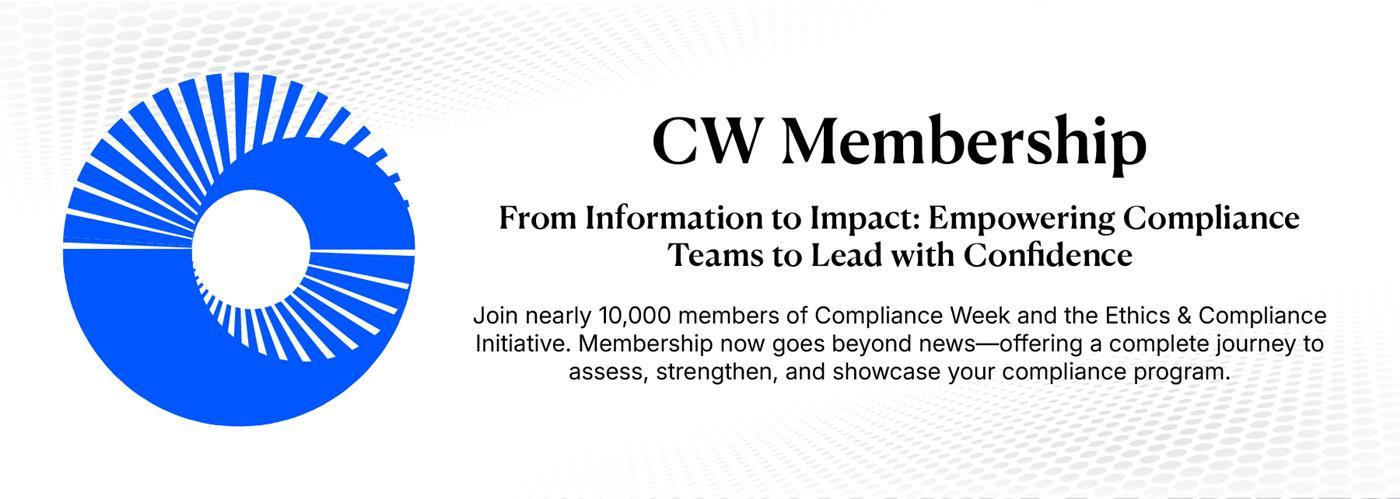- Home
-
News
- Back to parent navigation item
- News
- National Compliance Officer Day 2025
- Accounting & Auditing
- AI
- AML
- Anti-Bribery
- Best Practices
- Boards & Shareholders
- Cryptocurrency and Digital Assets
- Culture
- ESG/Social Responsibility
- Ethics & Culture
- Europe
- Financial Services
- Internal Controls
- Regulatory Enforcement
- Regulatory Policy
- Risk Management
- Sanctions
- Surveys & Benchmarking
- Supply Chain
- Third Party Risk
- Whistleblowers
- Opinion
- Benchmarking
- Certification
- Events
- Research
- Awards
-
CW Connect
- Back to parent navigation item
- CW Connect
- Sign In
- Apply
- Membership
Ask a CCO: What makes a good internal reporting system?
By Compliance Week2021-10-05T13:00:00

Seven senior compliance practitioners explain what they believe to be the key tenets of an internal reporting system that encourages employees to come forward with reports of potential misconduct.
THIS IS MEMBERS-ONLY CONTENT
You are not logged in and do not have access to members-only content.
If you are already a registered user or a member, SIGN IN now.
Related articles
-
 Opinion
OpinionHow to identify and mitigate risks posed by Foreign Terrorist Organizations
2025-12-24T18:55:00Z By Michael K. Atkinson and Caroline E. Brown, CW guest columnists
Since Inauguration Day on Jan. 20, 2025, the Trump Administration has made it a priority to expand the list of designated Foreign Terrorist Organizations.
-
 Webcast
WebcastCPE Webcast: Hot Topics in Risk and Compliance: AI, Analytics, and Emerging Audit Technologies
2025-12-16T14:00:00Z Provided by Workiva
Join experts from KPMG, Cisco, and Workiva as they explore how audit, accounting, and finance professionals can leverage a technology mix of data analytics, gen AI, and other tools to ramp up efficiency and strengthen control effectiveness.
-
 Survey
SurveyCW survey finds compliance teams struggling to scale due diligence beyond direct vendors
2025-12-09T21:13:00Z By Oscar Gonzalez
Companies are tightening oversight of third-party risks but still struggle to extend due diligence beyond their direct partners, according to a new survey by Compliance Week and GAN Integrity.
More from Opinion
-
 Opinion
OpinionThe invisible cost of digital defense on mental health
2025-12-26T12:00:00Z By By Timothy Miller, CW guest columnist
Cybersecurity professionals, particularly those in leadership roles, often face immense pressure and stress due to the constant threat of cyberattacks.
-
 Opinion
OpinionFINRA’s GenAI wake-up call: What compliance professionals must do now
2025-12-24T19:04:00Z By Tom Fox
FINRA’s rules are intended to be technologically neutral. They apply when companies use GenAI or similar technologies in their businesses, just as they apply when companies use any other technology or tool. But what does that mean for a compliance professional using GenAI?
-
 Opinion
OpinionWhat the Copilot Usage Report 2025 Means for Corporate Compliance
2025-12-18T18:48:00Z By Tom Fox
Microsoft’s Copilot Usage Report 2025 offers compliance professionals a rare, data-driven look at how artificial intelligence is actually being used by millions of people, rather than how organizations assume it is being used.
- Terms and Conditions
- Privacy Policy
- Do Not Sell My Info
- © 2025 Compliance Week
Site powered by Webvision Cloud






